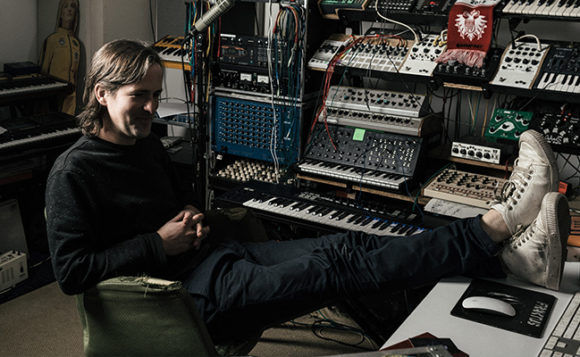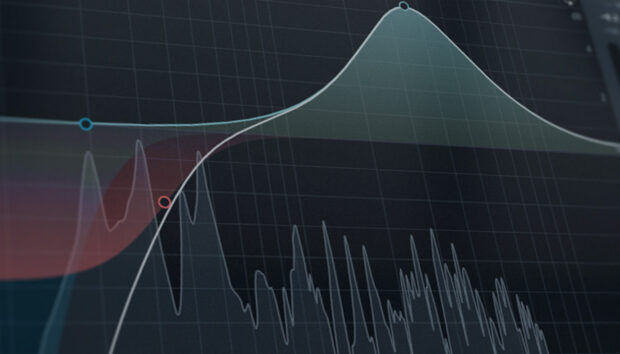Ahead of the release of his latest album, ‘Wax Poetic For This Our Great Resolve’, Canadian dub-techno producer Deadbeat, a.k.a. Scott Monteith talks to Peter Kirn for Native Instruments, delving into the ‘out of the box’ practises used to construct his deeply layered, and haunting sound.
It’s easy to get lost in our boxes, staring at screens – and it’s easy to lose our sense of air and hope. That’s not just a danger of modern music making but of modern life in general.
Deadbeat, a.k.a. Scott Monteith, show us there’s another way with Wax Poetic For This Our Great Resolve. But this isn’t just another retro, “unplugged” album eschewing technology. He took all that technological power and used it to pull us back into a positive, personal space. Instead of paging through news on his phone, he dialed up friends, got impromptu samples recorded via WhatsApp, organized lunches and coffees and recording sessions. Recorded in his shared Berlin recording-space, Monteith reached out to artistic cohorts including studio neighbors Ben Lauber, Marco Haas aka T.Raumschmiere, Tilman Hopf, Giovanni Nicoletta, PC Nacht, and Cherie.
And the recording itself is not so much “out-of-the-box” as in away from his beloved PC and hardware synths. No – it’s out of the box, then further out of the box, then back into the box again. He programmed elaborate rhythms, then recorded live performances of them. He miked drum loops in toilets, and killed the dry, lifeless feeling of sounds by re-recording every synthesized noise in real space. Then, if that wasn’t enough, back on the PC, he dug deep into REAKTOR ensembles to immerse the mix in granular textures, re-process vocals, and add colors and flavors that give each track a magical glow. And it’s all so expertly mixed that these electronic REAKTOR textures become part of the air and atmosphere.
In short, it’s an exercise in breathing life into music and ourselves again. And in the keeping of the milieu of the album, talking to Monteith meant an extended coffee and lunch session with far-reaching chatter and reflection.
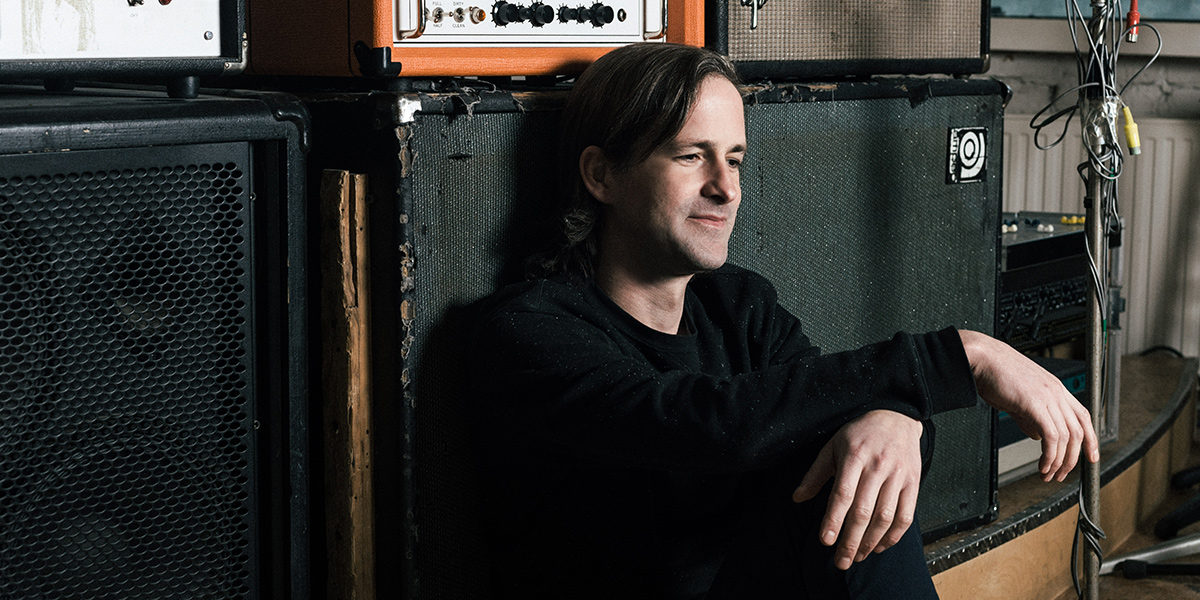
Where did the concept for this record originate?
It started maybe two winters ago. I was the most addicted — like a news junkie — on my phone. Like the stupid thing of flipping through The Guardian, The Washington Post, like every time there was a free moment, just going through and reading shit. And it started to make me really paranoid and agitated all the time.
There’s so much artistic reaction — visual or music — that’s happened over the last couple of years. Unfortunately, the majority of that fist-shaking is taking place in giant, blathering online posts. It’s not even counterproductive; it’s useless. You spew it into Facebook, and it’s in people’s feed and people like it, and it disappears. And it gives you the false sense that you’ve actually registered some sort of protest, that you’ve actually done something, when you actually haven’t done anything. It would probably be more productive psychologically to do it in a diary, for yourself.
The idea of the vocals — the idea of asking for messages of hope from friends — was really where that came from. Everybody’s screaming and yelling. And really, at the end of the day, in the same way, there’s all these techno records with vaguely political grayscale imagery on the 12″ stampers, with like pure doom and gloom, pure anger. And I said, “What about something else? What about hope? What does hope look like? What makes you hopeful? Where do you find that?”
How did you manage bringing in all the people, the outside inspiration?
It started with phone calls. “Hey, I’ve got this weird idea – do you want to be part of this?” Then it was meeting people and talking about it and playing people stuff over dinner in the process of making it. And my friend Steve [Dr Steven Karl Knell], who’s an economist in London, just picked up the book that he was reading about elections and democracy and read a chunk out of that that made him feel particularly hopeful. And Fatima Camara [Parachute Records] was like, “This Robert Frost poem, I’m going to read that.” Gudrun Gut wrote something herself. Thomas Fehlmann [The Orb] reads Joseph Beuys How to be an Artist?
All the hi-hats are recorded by Ben Lauber and Marco Haas [a.k.a. T.Raumschmiere] here in the studio. The piano was played by me and Giovanni [Nicoletta], sitting at two pianos. And on top of the technical things, there were hundreds of hours of late-night and daytime conversations with the guys here. “What do you think of this? Yeah, no that doesn’t sound good, take it out, take it out. Move this around… No, no, don’t do that.”
The real-time human interaction, yes, that could have been done over Facebook chat and FaceTime and all of these things… But who the fuck would want to do that if you don’t have to? Why would you ever choose to do it sitting behind your screen when you can do it with the person in front of you?
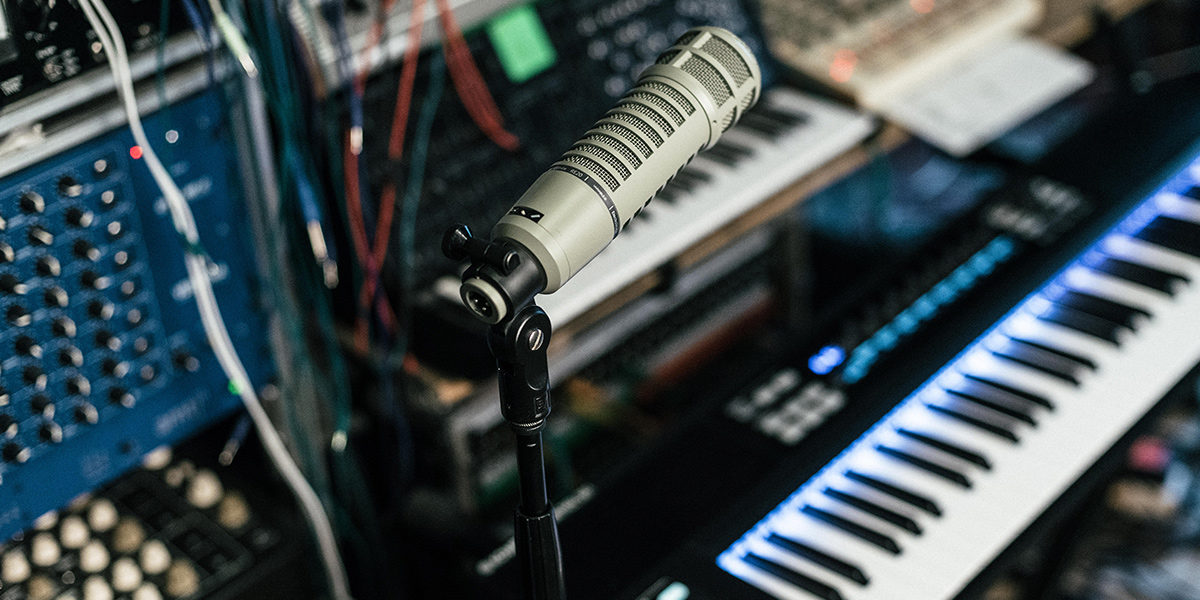
Once you’d gathered enough of this raw sonic material, how did you begin to shape it into music?
I started these beats, and then ended up with all these recordings [of the vocals/texts], and used those as the basis of things, and sort of matched up different recordings as they came in. There was no melody in anything, and at that point it was just some beats and the vocal recordings, and it was just on feeling. Doing things as they came together.
And then I wrote all the melodies, taking voices from the recordings and extracting MIDI data.
But then, from that point, that was the end of the in-the-box period.
The in-the-box drums ended up being totally replaced, too. It was just the pre-canned drums that were in there, all in Drum Racks [in Ableton]. And I then went out one night, walking around Berlin with a golf club, because you’ve got a really hard metal surface and a rubber surface, and spent a few hours walking around smashing shit.
And you didn’t scare anyone?
I was conscious of that. With people coming down the street — okay, let’s make the golf club look like a cane.
Then I ended up with this big bank of a few thousand samples, and then went through and replaced all the 606s and 808s and everything and made them of these Berlin street drums.
And then, yeah, I just started recording stuff on top of it. And as that recording process started happening, I realized at some point I had forgotten to turn the monitors off on a take, and recorded one of the synths through the mic. And so it had all of the air of the place — and I was like, “Oh, maybe I should try doing everything through the microphone.” So I recorded even the hardware synths, the Vermona DRM1 [analogue drum machine], I was playing the claps out here and recording it and putting this mic here and this mic there.
The pianos and the guitars and basses, everything was recorded. There’s also mistakes in performances that are on the recordings. There’s places where the melodies are insanely simple, that if I had done it in the box, I probably would have been, “Oh well, I’ll copy this four times and add this change on the fourth bar.” But it’s like, that’s not real. Here, I’ve got four recordings of me playing the same simple thing because that’s what I could play and that’s what worked. And the whole space around it, and the slight errors of me just not being able to play particularly well, is what makes it interesting.
The re-micing techniques sound fascinating. Could you give more examples? And did you do it all in the studio?
Yeah, and also in the other room, the piano and the organs. And playing the MS-20, sending the MS-20 out to the speakers, listening to everything else in the headphones, and playing. Putting the dynamic microphone out there to record the MS-20. Or playing drum loops and putting the dynamic mic in the toilet, and listening to the feedback of the drum loops in the toilet, and making basslines out of the feedback.
These mics pick up everything and they make crazy feedback, so there are all these huge long oscillations. It picks up everything so hardcore, so you really get these bbbbuwwwwwhhh sounds.
Was it ever a challenge to manage all this noise and low-end feedback in the mix?
As far as mixing stuff, I’m pretty confident at this stage. I know where those things will be and will lightly sidechain things and filter things, and know this kick drum is around this frequency, or this snare or this synth or whatever, and punch holes in all of that stuff so that everything sits.
Where does REAKTOR fit into all of this?
The middle stage that was between all the recording and arranging was the weirdo stage, which was like going through all my favorite REAKTOR granular processors and changing some of them [via the Structure View].
[Find out which REAKTOR ensembles used in production over at CDM here.]
You’re a big fan of one of NI’s compressors, too, right?
Yeah, my go-to is the VC 2A. It works on everything – it’s like a set-and-forget kind of thing. It’s great on vocals, it’s great on drums, it’s great on everything. It’s got a slower attack, so for drums, it’s better on buses.
Going back to the rerecording aspect for a moment, what motivated you to do it, and what did you gain from it?
That’s the thing: everything was really played. Of course, there are some note corrections, and you don’t want everything unquantized. Something’s got to be quantized, in the end, unless you’re Bernie Worrell or something like that. But this record was really loosey-goosey — especially with playing real basses and pianos, both in terms of timing and with the mics. The end of takes was left, so there’s coughs, and Marco or me or Ben saying something that’s, like, buried in delays later in the mix. Or this silence was left, all of this air was left — so the space was left. The studio here was the ghost partner for the whole project. The sound of the place is in it.
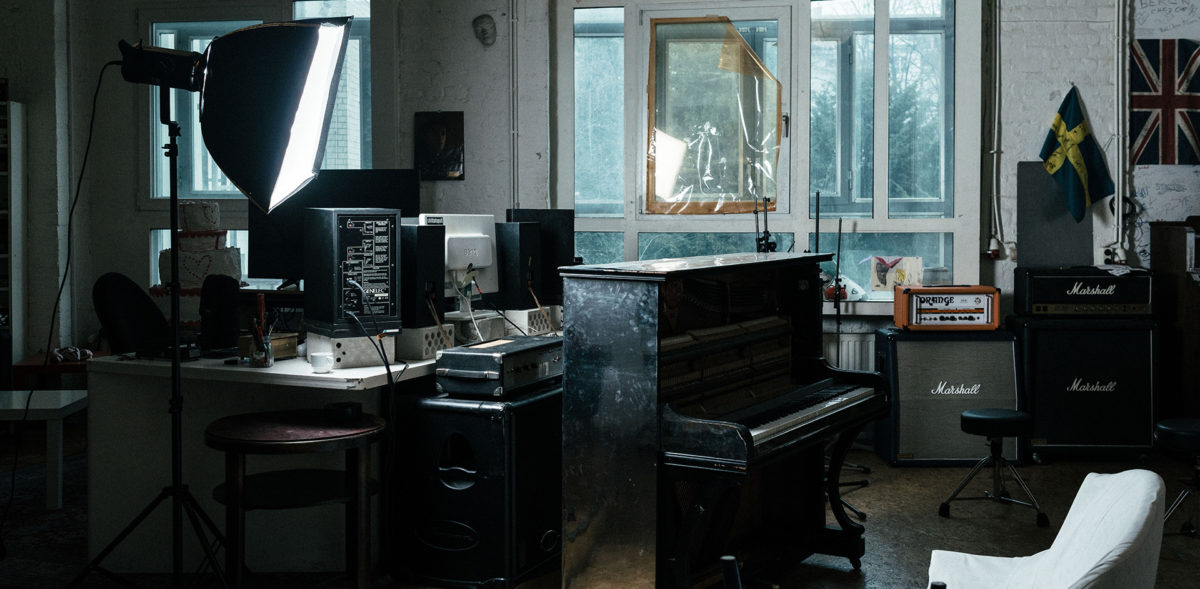
It seems like that can suck the life out of projects, if people are new to production, and they get lost in these pristine sounds… The result can be too clean and generic.
It’s so fucking hard. When I was living in Montreal, when I very first started music, I remember spending whole evenings going sort of A/B back and forth when I was using [AAS] Tassman [a modular environment] or using Acid [loop production tool] with samples, going back and forth between a noise source that I was making and on the DJ mixer. I was putting up Basic Channel records and going, “Does it have that warmth?” A lot of the time, you’re like, “OK, Basic Channel has got the sheet of noise on top, so let’s pop open whatever soft synth and have a noise generator going sssshhhh over the top of everything.” But if you do that, you realize it sounds like shit. There’s noise, and then there’s warmly kneaded, doughy noise that those guys used.
Even though my label’s not a real label — it’s just a vehicle for my music to come out — I get tons of dub techno demos. And the number of them that you listen to and you’re like, “This is melodically pretty good — it ticks all of the boxes for what a dub techno track should be.” But you can hear that it’s the noise generator from a shitty hardware or software synth, and everything’s right on the grid, and the plasticity of the thing comes out so strongly.
And I guess it’s not just dub techno — that’s with anything. Right now, the scene is inundated with house music and big dark techno music that does everything on a surface level, but then you’re like, “This just isn’t right.”
Do you feel that being overly immersed in the techno or electronic dance scene can have a harmful effect — that it can make music sound too much alike?
The thing that’s more damaging to open-ended creativity is… Our scene has become a very powerful business, as well. And if you do well with things, you could make a lot of money. And I think that influences people.
It’s like taking culinary advice from a line chef who’s working at the airport restaurant…
…Which may also do a lot of turnover.
Yeah. Probably makes tons of money and knows how to get shit done and makes 500 meals a day — but none of them you’d want to eat.
You mentioned in another discussion that Is that something you try to consciously avoid?
That’s a classic — for me, as well. A little voice that I have to exorcise regularly. I’ll be working on something in here in the middle of the night, and have a great time, and then go home and come back in the morning and go, “You know, it sounds really good – but maybe if I add a kick drum, maybe I’ll do a version that’s more playable.” And then I’m like, “NOOOO! What are you doing? This is a great thing on its own. Why does it matter if it fits into somebody’s minimal house set?”
For me, I think I’m pretty deliberate: if I want to make techno, I’ll make techno. But any time that I start reaching for the tempo and saying, “What does it sound like at 124?” or whatever, trying to cram it into the box that I can then sell 300 copies of a 12″, I know I’m making mistakes.
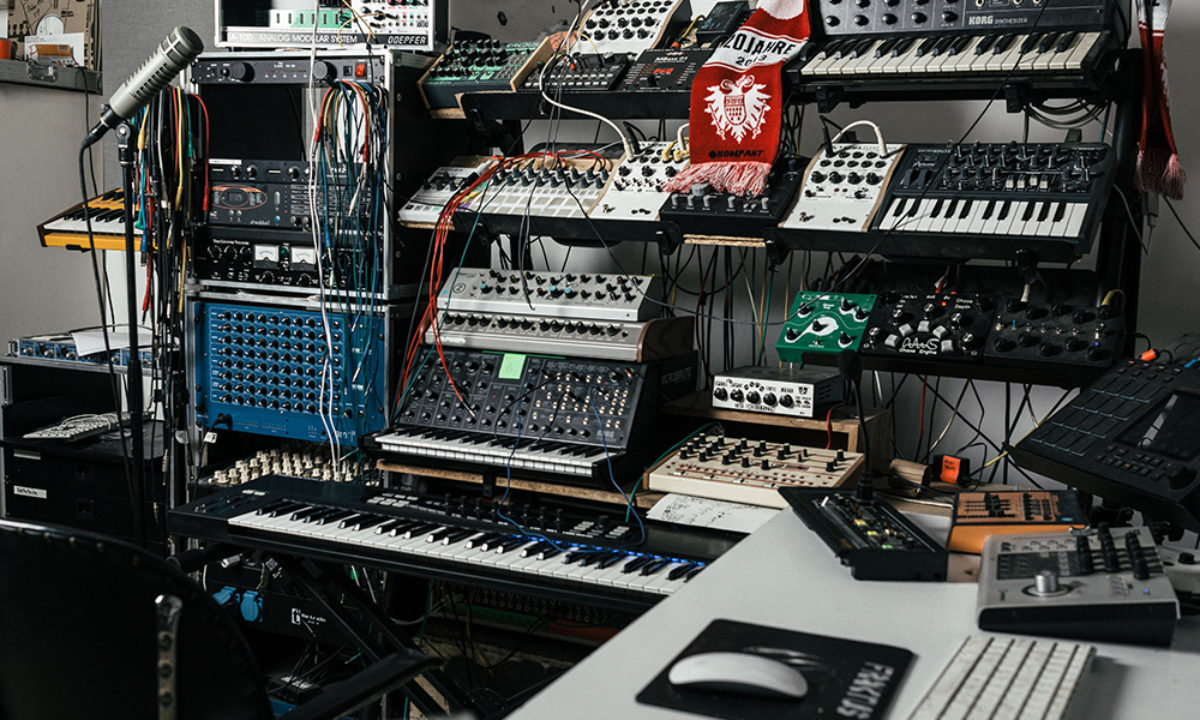
While we’re talking tempo, was that an important consideration for this project? Any particular tempo ranges that worked well?
One thing that I came back to was this tempo: 107 [bpm]. When I did the third album for ~scape years and years ago, I remember really sitting in the studio in Montreal and being like, “OK, I’m going to make new beats!” And spending a lot of time pushing and pulling drums on and off the grid, and moving the tempo up and down and trying to make something that wasn’t what was conventional at the time — like 130 bpm techno and click house at 120 or something like that. I was moving things up and down and settled at 107. And I wrote that whole album, or most of the album, at 107. And I think the next one as well was at 107. And I opened up some old projects on CD and was like, “Oh, 107.” And I went back to that for this.
You’ve sort of got three options. If you run 4/4, typical house beats, you’ve got this really cool, very slow, sort of spacious version of house — even if you put everything on the grid with a little bit of the typical delays, you have this weird, slow swing. And if you put the tempo up a little bit, it disappears. There’s this natural swing at that tempo.
If you shift the kick drums back, and shift the hi-hats back on the one, you’ve got dancehall, but slightly faster than regular dancehall, so it can become quite banging. So in contrast to these slow house beats, you’ve got a structure to make much more aggressive-sounding stuff.
If you half-time it, then you’ve got pure reggae steppers or total fucking doom rock 53.5 bpm rock drums that are mega slow.
So with just shifting things around, or dropping a beat here or there, it presents this whole realm of possibilities. And I guess you could say that people will find the same level of inspiration at any tempo. But I think this specifically, because it’s just outside of dance music convention, it inspires me, even on a root level, just with the rhythms and the drums.
Right, and then it’s slow enough to hear. If it’s too fast, you don’t have this horizontal headroom.
Exactly. This one is taking things diagonal or vertical, for the subtle changes.
For a rundown of Scott’s secret-sauce REAKTOR Ensembles and KOMPLETE effects, visit CDM, where he shares the tools that shaped the diverse recorded elements into his unique sonic vision.
photo credits: Camille Blake










